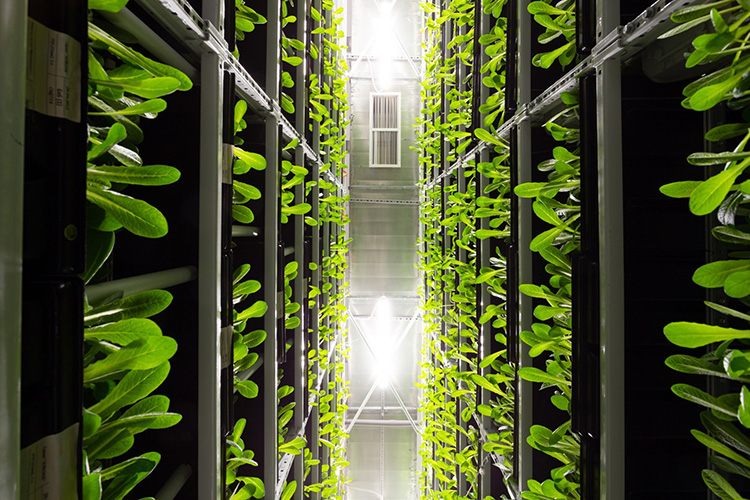Report on Agricultural Market Developments and Food Security with Emphasis on Sustainable Development Goals (SDGs)
1. Updates from International Organizations
Members received updates from key observer international organizations including the International Grains Council (IGC), the UN Food and Agriculture Organization (FAO), and the World Food Programme (WFP). These updates focused on global food security challenges, particularly those affecting least developed countries (LDCs) and net food-importing developing countries (NFIDCs). The discussions underscored ongoing efforts to mitigate these challenges in alignment with the Sustainable Development Goals (SDGs), especially SDG 2: Zero Hunger.
2. International Grains Council (IGC) Report
- The IGC reported broadly favorable prospects for the next grain harvest, despite dry conditions in parts of East Asia.
- Global crop projections increased by 2 million tonnes to a record 2,375 million tonnes.
- Total grain consumption forecast was slightly revised down to 2,372 million tonnes.
- Emphasis was placed on the importance of open trade and market transparency to ensure food security, supporting SDG 17: Partnerships for the Goals.
- The Wheat Maritime Trade and Food Security Dashboard, developed jointly with the WTO, was highlighted as a tool for monitoring international wheat trade flows.
3. FAO’s State of Food Security and Nutrition in the World (SOFI) 2024
- FAO confirmed that global progress towards ending hunger is off track, with chronic hunger and food insecurity persisting at high levels.
- Prevalence of undernourishment reached 9.1% in 2023, affecting an estimated 733 million people, approximately 152 million more than in 2019.
- The protracted nature of food insecurity was emphasized, highlighting the need for resilience-building efforts consistent with SDG 2 and SDG 13: Climate Action.
- FAO has developed a dedicated web page providing detailed information on global food security challenges and responses.
4. World Food Programme (WFP) Insights
- Global food insecurity remains alarmingly high with 295 million people acutely affected.
- Catastrophic hunger increased from 80,000 in 2018 to 1.9 million in 2024, driven primarily by conflict and extreme weather events.
- Economic factors such as inflation, debt, and high food prices further threaten food security.
- Humanitarian operations face funding shortfalls, with WFP expecting to assist 24 million fewer people in 2025 compared to 2024.
- WFP highlighted the positive impact of the WTO’s MC12 Decision exempting humanitarian food purchases from export restrictions, facilitating access to food and supporting SDG 2 and SDG 17.
Transparency and Trade Policy Decisions
5. Nairobi Decision on Export Competition
- Members were urged to finalize alignment of export subsidy schedules with Nairobi Decision obligations.
- The next dedicated discussion on export competition is scheduled for September 2025.
- 2024 is the final year for submitting information via the export competition questionnaire (ECQ); from 2025, a new consolidated annual notification will be required.
- Members were encouraged to use the Agriculture Information Management System (AG IMS) online facility to submit outstanding responses.
6. Bali Decision on Tariff Rate Quota (TRQ) Administration
- The second triennial review of the Bali Decision is due in 2025 and will remain on the Committee’s agenda throughout the year.
- Discussions focus on improving transparency, completeness of market access notifications, and addressing underutilization of TRQs.
- Members called for actions to remove barriers such as unrelated licensing requirements and to explore quota reallocation to enhance effectiveness.
Technology Transfer and Agricultural Policy Review
7. Technology Transfer to Developing Economies
- Members expressed interest in advancing discussions on technology transfer in the food and agricultural sector to support SDG 9: Industry, Innovation and Infrastructure.
- Calls were made to move beyond educational exchanges towards exploring how WTO rules can support technological development.
- The Chair encouraged submission of concrete proposals and suggested informal discussions to facilitate progress.
8. Agricultural Policies Review
- A total of 180 questions were raised on individual notifications and implementation matters under the Agreement on Agriculture.
- 14 new issues were introduced, covering topics such as livestock industry funds, rural development, farm support, emergency measures, and environmental initiatives.
- Recurring issues included domestic support programs, export duties, carbon emission reduction, fertilizer security, and debt relief policies.
- Since March 2025, 53 individual notifications were submitted covering market access, domestic support, export competition, and implementation of the Marrakesh Decision on LDCs and NFIDCs.
- The Chair emphasized the importance of timely and complete notifications to enhance transparency, supporting SDG 16: Peace, Justice and Strong Institutions.
Next Steps
The next meeting of the Committee on Agriculture is scheduled for 25-26 September 2025, where ongoing discussions on food security, trade transparency, technology transfer, and agricultural policy implementation will continue to align with the Sustainable Development Goals.
1. Sustainable Development Goals (SDGs) Addressed or Connected to the Issues Highlighted in the Article
- SDG 2: Zero Hunger
- The article focuses extensively on global food security, hunger, and nutrition challenges.
- It highlights issues such as chronic hunger, acute food insecurity, and efforts to end hunger worldwide.
- SDG 12: Responsible Consumption and Production
- Discussions on agricultural market developments, trade policies, and transparency relate to sustainable production and consumption patterns.
- SDG 13: Climate Action
- References to extreme weather events like droughts and floods impacting food security connect to climate change and its effects.
- Japan’s initiatives to lower carbon emissions in agriculture are also mentioned.
- SDG 17: Partnerships for the Goals
- International cooperation through organizations like WTO, FAO, WFP, and IGC is emphasized.
- Discussions on technology transfer and trade facilitation reflect partnerships to achieve sustainable development.
2. Specific Targets Under Those SDGs Identified Based on the Article’s Content
- SDG 2: Zero Hunger
- Target 2.1: End hunger and ensure access by all people to safe, nutritious, and sufficient food all year round.
- Target 2.3: Double the agricultural productivity and incomes of small-scale food producers.
- Target 2.a: Increase investment, including through enhanced international cooperation, in rural infrastructure, agricultural research, and technology development.
- SDG 12: Responsible Consumption and Production
- Target 12.6: Encourage companies, especially large and transnational companies, to adopt sustainable practices and integrate sustainability information into their reporting cycle.
- Target 12.8: Ensure that people have relevant information and awareness for sustainable development and lifestyles in harmony with nature.
- SDG 13: Climate Action
- Target 13.1: Strengthen resilience and adaptive capacity to climate-related hazards and natural disasters in all countries.
- Target 13.3: Improve education, awareness-raising and human and institutional capacity on climate change mitigation, adaptation, impact reduction, and early warning.
- SDG 17: Partnerships for the Goals
- Target 17.6: Enhance North-South, South-South and triangular regional and international cooperation on and access to science, technology and innovation.
- Target 17.11: Significantly increase the exports of developing countries, in particular with a view to doubling the least developed countries’ share of global exports.
3. Indicators Mentioned or Implied in the Article to Measure Progress Towards the Identified Targets
- SDG 2 Indicators
- Prevalence of undernourishment (% of population) — The article cites the 9.1% prevalence in 2023, indicating chronic hunger levels.
- Number of people facing hunger (millions) — Estimated at 733 million in 2023.
- Number of people acutely food insecure — Reported as 295 million globally.
- Grain production and consumption volumes (million tonnes) — The IGC’s data on grain harvest projections and consumption forecasts.
- SDG 12 Indicators
- Transparency and completeness of market access notifications and export competition data — discussed in relation to WTO notifications and reporting systems.
- Utilization rates of Tariff Rate Quotas (TRQs) — Issues of underutilization and barriers are addressed.
- SDG 13 Indicators
- Incidence and impact of extreme weather events on agriculture — implied through references to droughts and floods affecting food security.
- Carbon emissions from agricultural activities — referenced through Japan’s initiatives to lower emissions.
- SDG 17 Indicators
- Number and effectiveness of international agreements and decisions facilitating trade and humanitarian food purchases — e.g., WTO’s MC12 Decision on exempting humanitarian food purchases from export restrictions.
- Technology transfer activities and discussions — implied through ongoing talks on technology transfer to developing countries.
4. Table of SDGs, Targets and Indicators
| SDGs | Targets | Indicators |
|---|---|---|
| SDG 2: Zero Hunger |
|
|
| SDG 12: Responsible Consumption and Production |
|
|
| SDG 13: Climate Action |
|
|
| SDG 17: Partnerships for the Goals |
|
|
Source: wto.org







